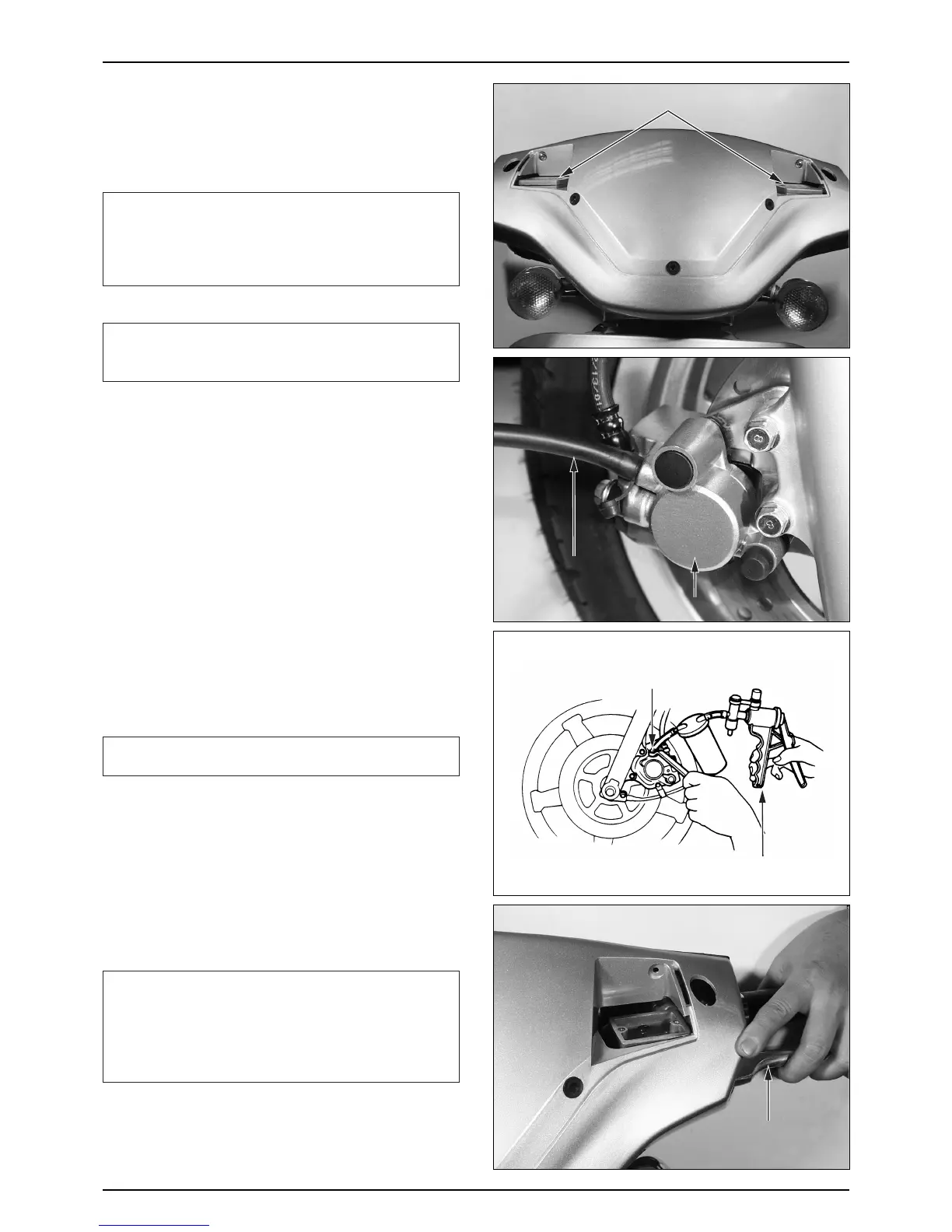BRAKE FLUID/BLEEDING
BRAKE FLUID CHANGE
CAUTION
·A contaminate disk or pad reduces braking power.
Do not allow the disk or pad to be contaminated by
oil.
·Replace contaminated pads, and remove pollutants
from the disk completely.
NOTE
·Check the brake fluid level often, and replenish new
fluid as required. Do not spill fluid on painted, plastic
or rubber parts.
● Remove the wind screen. (⇨4-10 )
● Remove the oil cup cap, diaphragm plate and
diaphragm from the master cylinder.
● Connect the bleeder hose to the bleeder valve. Loosen
the bleeder valve, and pump the brake lever repeatedly.
● When there is no more fluid flowing out of the bleeder
valve, stop pumping the brake lever.
AIR BLEEDING
<
When the brake bleeder is available
>
● Fill the reservoir with DOT 3 or 4 brake fluid up to the
upper level.
CAUTION
·To prevent chemical changed, do not use different
types of brake fluid.
● Connect the recommended brake bleeder to the bleeder
valve.
● Loosen the bleeder valve while pumping the brake
lever.
● Repeat this operation until the brake fluid flows out of
the brake bleeder.
● Add brake fluid.
NOTE
·Check the fluid level often, and replenish fluid if the
amount of fluid is reduced to the lower level.
·Read the user’s manual carefully prior to
disassembling or using the brake bleeder.
·Protect the bleeder valve with tape to prevent air
from entering the bleeder valve.
● Repeat the above procedures until no air bubbles
appear in the bleeder hose.
● Squeeze the bleeder valve and operate the brake lever
to check the ingress of air.

